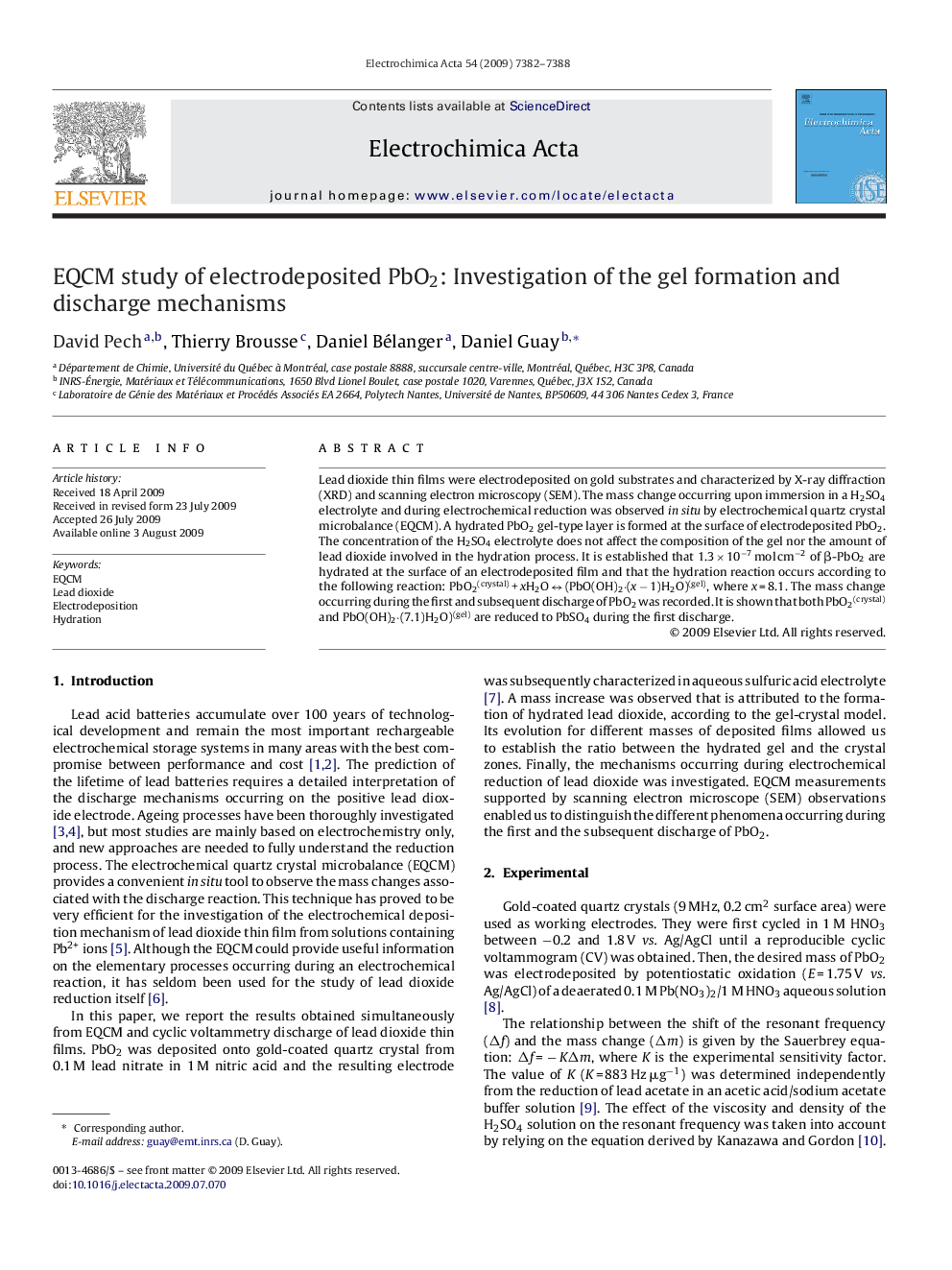| Article ID | Journal | Published Year | Pages | File Type |
|---|---|---|---|---|
| 191939 | Electrochimica Acta | 2009 | 7 Pages |
Lead dioxide thin films were electrodeposited on gold substrates and characterized by X-ray diffraction (XRD) and scanning electron microscopy (SEM). The mass change occurring upon immersion in a H2SO4 electrolyte and during electrochemical reduction was observed in situ by electrochemical quartz crystal microbalance (EQCM). A hydrated PbO2 gel-type layer is formed at the surface of electrodeposited PbO2. The concentration of the H2SO4 electrolyte does not affect the composition of the gel nor the amount of lead dioxide involved in the hydration process. It is established that 1.3 × 10−7 mol cm−2 of β-PbO2 are hydrated at the surface of an electrodeposited film and that the hydration reaction occurs according to the following reaction: PbO2(crystal) + xH2O ↔ (PbO(OH)2·(x − 1)H2O)(gel), where x = 8.1. The mass change occurring during the first and subsequent discharge of PbO2 was recorded. It is shown that both PbO2(crystal) and PbO(OH)2·(7.1)H2O)(gel) are reduced to PbSO4 during the first discharge.
